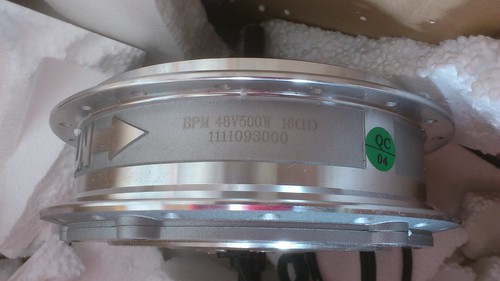Quite a few of the bikes coming to the Eden ebike event, on 20-24th april, have the bpm or cst motor fitted: It appears that this motor is one of the main contenders in the Hub vs Crank tussle presently being fought out, with the Bosch Centredrive being t'other.
I, for one, am totally confused as to the true identity (multiple or otherwise) of these motors:
I read of 250/350w: 350w restricted to 250w: 350/500w: 500w.......
Could someone, with a good working knowledge of them, please enlighten me as to what is actually available from the manufacturer, what is being fitted to bikes which are en15194 compliant &, most of all, which can be upgraded once the warranty's out, by use of a bigger controller? The max practical amperage sustainable would be appreciated.
I'm sure this has all been provided before, but everywhere I look seems to confuse me more

Feel free to post links if it'll save typing!
See?
THIS is what frustrates me about the Pedelec forum.
Someone asks a straightforward question, (it really is) ... and they get paragraph after paragraph and post after post of, I'd claim, irrelevant technical asides that do little to either answer the original question OR enlighten anybody NOT in the little 'techy club' on here.
And yes. Of course the tech info isn't really irrelevant and, of course, we worship the 'site experts' who freely give us their time and wisdom ...
But, Jeez, can we, for once, have a reasonably straight answer to a reasonably worthy, straight question?
I found this old thread because I was seeking an answer to a question of my own ... related (and similar to) the Bafang BPM motor question Jack appears to be asking.
So let me ask my question. (Similar to Jacks), but let us see if someone can give me a straight answer.
Here goes.
I'm a potential customer.
I want to BUY a brand new 700c front wheel ... with a Bafang BPM hub motor therein.... along with a beefy, suitably appropriate, controller to cope with the torque this motor dishes out.
Apparently, (as Woosh recently commented elsewhere), the Bafang BPM hub motor is seriously fierce, (my words), and, presumably, a fantastic motor to consider if anyone is, (like me), keen to enhance their existing hill climbing machine.
So ... without all the BS, (and without quoting EN15194 yet again), IN PLAIN ENGLISH, please provide a link or a simple answer regarding what I should be attempting to buy to, absolutely, make the correct choice of Bafang BPM hub motor / 700c wheel assembly and controller.
If you think you may need to pick me up for not, apparently, asking the right question or if you feel an equally frustrating need to simply show off just what a fabulous clever clogs you are ... well ... well done you ... but I just don't care for more technical distraction.
If, however, you can recognise that I am an actual customer, (to someone), with money burning in my pocket just waiting to be placed on an order for a 700c Bafang BPM front hub wheel assembly with appropriate controller and lower RPM for greater torque ... then ...
Please help.
So ... in the plainest, plainest ... plainest language I can muster,
"I'd be eternally grateful to the Gods if someone could recommend the correct Bafang BPM, (or genuine equivalent model), hub motor / 700c wheel / controller etc to turn my lightweight alloy Xbike framed home built beach machine into the hairiest, bad tempered, beast of a mountain goat the UK has ever seen.".
WHAT legal product should I be asking for? (It'll be on a 36v system and intended to be legit and legal).
---
And, just for fun, if I said I was planning to build a 15ah (or greater) 48v (or greater) lithium cell pack and illegally create a 1000W Frankenstein of a machine, (purely for off road hill climbing cliff and coastal pursuits), again ... without all the Watts = Volts X Amps distractions ... please just recommend some 'off the shelf' consumer parts I might buy right now.
Thanks.
(You know I love you really) XXX









